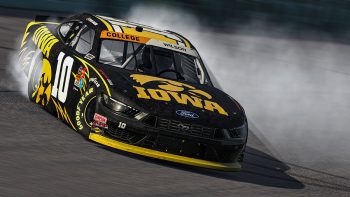
Drag’n Slayer
December 5th, 2009 by DavidP
I was working on some acceleration tests at Indianapolis with various cars to determine their power curves and stumbled upon an interesting idea. I figured I could estimate the drag coefficient from the cars by capturing some telemetry data. I wanted to remove the aero drag and rolling resistance forces from the data in order to grasp the values of the power to the wheels, and to do that the best approach is to collect speed data as the car coasts down from a high speed. But I realized I could also extract the aero drag values for each car tested.
When you plot the deceleration rate (change in speed/change in time) and curve-fit using Excel, you can estimate the aero drag and rolling resistance force since:
F = m * a
Where m is the mass of the car and acceleration, a, is measured as a function of speed as described above.

With the curve fit providing the first and second order constants, then we can assume the second order constant corresponds to the aero drag since, as any wise-assed NASA engineer will tell you:
Aero drag force, Fdrag = 0.5 * Cd * A *p * v^2
Where:
Cd = drag coefficient
A = frontal area of the car (for the Star Mazda, I’m estimating around 1.0 m2)
p= density of air (~1.2 kg/m3)
v = speed (m/s)
My estimates from testing the Star Mazda with the lowest wing settings and applying the formula put the CD in the range of ~0.7 – we’re talking pick-up truck figures here (a Prius is 0.25). But in fact, a little research shows that this value is probably correct or at least close, since CART cars set-up for Indy in the 1980s had CD values around 0.64 and modern F1 cars are 0.7-1.1 depending on the setup.
In addition, I was able to estimate the power of the resistance forces as a function of speed and this contrasted nicely with the power available at the wheels, and the curves intersect pretty close to the observed terminal velocity of 250 kph (155 mph).
So it appears that the importance of downforce greatly outweighs the performance costs incurred by a high drag value. But all this work also points to is the importance of always running at the lowest wing settings you can afford to run while maintaining maximum cornering and control, since any extra wing will simply waste power, speed and fuel. Bear in mind, too, that the importance of the CD decreases as horsepower increases.
Well, this exercise didn’t serve any practical purpose but was just for fun. Yes, this is a sim-geek’s version of fun. There’s lots of error built into the way I did things, but sadly, I am not geekified enough to unscramble everything on these cars. It’s a drag.















































